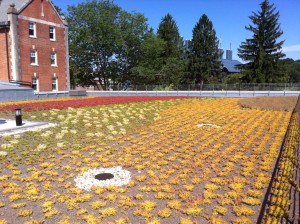If you deal with stormwater issues or land use planning, chances are you have heard the phrase “green infrastructure” mentioned a lot recently. It is rapidly replacing “Low Impact Development” (LID) as the phrase du jour in the stormwater biz. But before we all go willingly adopting this into our lexicon, we must first ask some pertinent questions.
1. What does green infrastructure mean?
If you Google (or Bing, if that’s how you roll) the phrase “green infrastructure” you will discover two related, but slightly different, definitions. Originally the term was used in land conservation circles to describe a planned and managed network of natural resources (forests, open space, waterways, etc.) in a community or watershed. The idea was that we can maximize the environmental benefits these areas provide to our communities by strategically planning where they are and how they can connect. This is very similar to what we have often referred to here at CLEAR as Open Space Planning.
More recently, the term has been adopted by the water quality world to refer to approaches that divert stormwater (i.e., rain/snowmelt) into natural areas, rather than directly into storm sewers (a.k.a. “grey infrastructure”). In doing so, you reduce the quantity impacts of stormwater (flooding, CSOs, etc.), as well as the quality impacts by removing pollutants through natural processes/filtering. Green infrastructure in this context includes utilizing rain gardens/bioretention, rain barrels/cisterns, green roofs, permeable pavements, bioswales, land conservation, urban trees and more.
